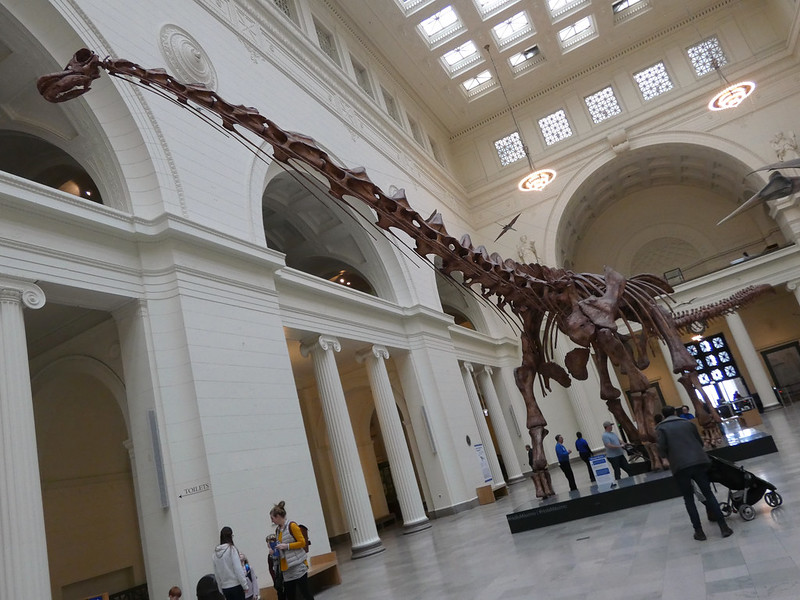
Around 122 million years ago, a gigantic, unique dinosaur unlike any previously seen walked the lands of what is now Spain. The bones of this ancient, long-necked titan dinosaur, known as a sauropod, have only just now been unearthed for the very first time.
The strangely shaped bones of this dinosaur make this all the more exciting. As far as we know, the characteristics of this recently identified “titan” dinosaur were quite basic and primitive. This finding could be a huge step in helping scientists learn more about the evolution of these massive, long-necked dinosaurs.
Ancient Dinosaur fossils dating back to Cretaceous period
The long-necked titan recently discovered at the Sant Antoni de la Vespa fossil site near the city of Morella is known as the Garumbatitan morellensis.
During their dig, scientists found parts of at least three ancient creatures. Large backbones, long leg bones, and even two nearly complete sets of foot bones were among the fossils discovered. This is super rare for sauropods, the type of dinosaurs they belong to.
These ancient fossils are quite old, dating back to a time known as the early Cretaceous period, which was between 145 million and 66 million years ago.
Scientists explained all about G. morellensis in a fresh research paper published on September 28th in the Zoological Journal of the Linnean Society.
Size of dinosaurs based on bones discovered
Sauropods, such as Diplodocus and Brachiosaurus, were huge plant-eating dinosaurs that walked on four legs. They had really long necks and tails and could grow to be incredibly large.
One special kind of sauropod called G. morellensis was part of a group called titanosaurs. These titanosaurs were the biggest sauropods ever and were the only ones to survive until an asteroid wiped out the dinosaurs about sixty-six million years ago.
Scientists are not certain about the exact size of G. morellensis based on the bones they have. However, one of the individuals is rather remarkable for its enormous size.
Its vertebrae were over three feet wide, and it had a thigh bone that could reach a length of over six and a half feet. This information comes from Pedro Mocho, a paleontologist from the University of Lisbon in Portugal, who led the study.
Based on the size of its bones, G. morellensis was probably about the same size as most titanosaurs, which could be as big as a basketball court.
Biggest known titanosaurs
The two biggest known titanosaurs, Argentinosaurus huinculensis, and Patagotitan mayorum, were among the largest dinosaurs ever. Scientists argue about which one was heaviest, but both likely weighed at least seventy tons (63.5 metric tons).
However, in 2021, researchers found the remains of a new unnamed titanosaur species in Argentina that might have been even larger than both Argentinosaurus huinculensis and Patagotitan mayorum.
Even though titanosaurs were the heaviest of sauropods, they weren’t the longest. The title for that probably goes to a sauropod nicknamed “Supersaurus,” which could stretch to 128 feet (39 meters) in length.
Details about newly discovered G. morellensis
The way its leg and foot bones were shaped tells us that G. morellensis belonged to a group of sauropods called Somphospondyli. Among these, it appears to be one of the more ancient types. This group includes titanosaurs and certain other sauropods that were quite long, such as Brachiosaurus, as noted by experts.
Fossils from Somphospondylans, a group of dinosaurs, have been discovered on all continents today. However, it hasn’t been clear where these creatures originally came from.
Sauropods reached massive sizes due to key traits: hollow bones, unchewed food consumption, long necks, and large stomachs. Their long necks, made light due to pneumatized spinal bones and small heads, accessed food others couldn't, making size an advantage. pic.twitter.com/NoqkAYw135
— Kenyon Roberts (@divekenyon) September 28, 2023
The finding of a primitive Somphospondylan in Spain suggests that Europe might have been their first home, but more evidence is needed to confirm this.
The team conducting the study also believes that places such as Sant Antoni de la Vespa, along with other sites in the Iberian Peninsula, could provide critical insights into the evolution of sauropods.
In 2022, scientists unveiled the remains of a massive unidentified sauropod in Portugal, which could potentially be the largest dinosaur fossil ever identified in Europe, dating back 150 million years.
See all the latest news from Greece and the world at Greekreporter.com. Contact our newsroom to report an update or send your story, photos and videos. Follow GR on Google News and subscribe here to our daily email!



